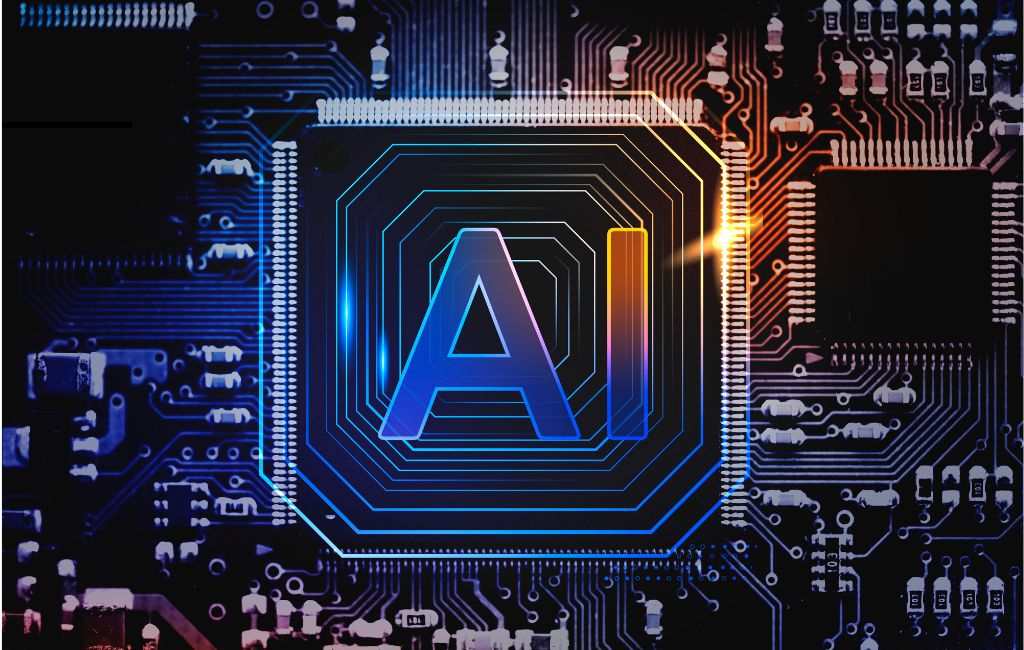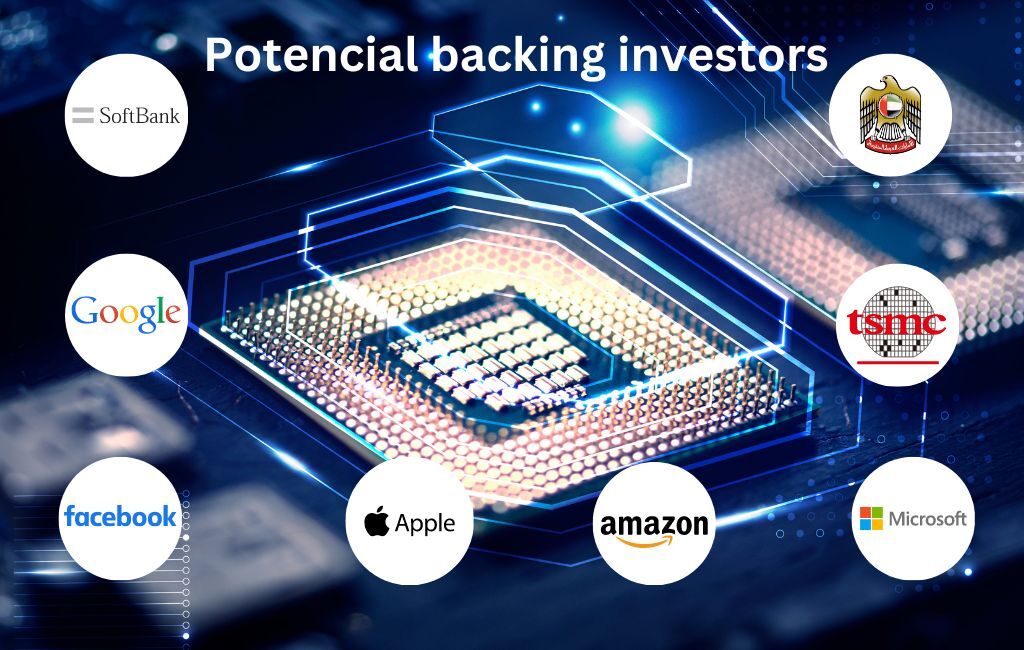
Introduction:
Hold onto your hard drives, folks, because the world of AI is about to get even more ambitious. OpenAI CEO Sam Altman, the visionary who spearheaded the development of powerful language models like GPT-3, is reportedly setting his sights on a new frontier: The Semiconductor Industry.
According to a Wall Street Journal report, Altman is in talks with investors, including those from the United Arab Emirates, to secure a staggering $5 trillion to $7 trillion in funding. This mind-blowing sum, exceeding the combined GDP of Japan, Germany, and India, is earmarked for a single, audacious goal: bolstering global production of chips specifically designed for AI technology.
But why chips, and why now? This blog delves deep into the heart of Altman’s audacious project, exploring the motivations, potential implications, and possible challenges lurking behind this trillion-dollar gamble.
Sam Altman’s Vision: Supercharging AI with Custom Chips
Sam Altman, the visionary CEO of OpenAI, isn’t settling for language models like GPT-3. He’s setting his sights on the very foundation of AI progress: the global semiconductor industry.
His ambitious vision? Revolutionize AI infrastructure with custom-designed chips.
But why the drastic leap? Let’s break down the current landscape:
The AI Chip Bottleneck:
The market, primarily dominated by giants like Nvidia, Intel, AMD, and Qualcomm, is struggling to keep up. Despite their expertise, they face critical limitations:
- Demand outpaces production: AI chip needs are skyrocketing, leaving manufacturers scrambling.
- Innovation roadblocks: Physical and technical limitations hinder rapid chip advancements.
- Costly constraints: Fierce competition across industries (smartphones, gaming, cloud, etc.) keeps AI chip prices high.
For organizations like OpenAI, this translates to a frustrating roadblock: lack of access to powerful, affordable chips. This stifles development and innovation, something Altman refuses to accept.
Sam Altman’s bold vision:
Imagine a world where AI flourishes unimpeded by chip limitations.
He envisions:
- Abundant: Readily available AI chips to fuel research and development.
- Affordable: Accessible hardware to democratize AI advancement.
- Cutting-edge: Groundbreaking chip designs pushing the boundaries of AI capabilities.
Altman’s mission is clear: shatter the current limitations and pave the way for a new era of AI progress.

Altman’s AI Chip Ecosystem: Building Bricks for a Revolution
Altman’s strategy entails the creation of a novel chip-making ecosystem, uniting manufacturers, suppliers, and users to address the burgeoning global demand for AI solutions.
He plans to invest in chip companies, the establishment of efficient chip manufacturing facilities, and the exploration of cutting-edge technologies such as neuromorphic and quantum chips.
Furthermore, Altman seeks collaboration with other AI entities, governments, and any stakeholders keen on actualizing this visionary initiative.While Altman’s plan is bold and riddled with challenges, it also harbors immense potential to reshape the landscape of AI and chip production.
Why Now: The Urgent Need for a Semiconductor Revolution and AI Infrastructure Upgrade
The current push for a new semiconductor strategy and a fresh AI infrastructure isn’t just hype – it’s a necessity driven by a rapidly evolving landscape. The simple truth is: what we have now just doesn’t cut it.
Here’s why:
- AI’s exponential growth: AI isn’t just a hot topic; it’s a transformative force impacting every aspect of our lives. Its growth is explosive, with estimates suggesting a market value of $267 billion by 2027 and a staggering 33.2% annual growth rate.
- Demand outpaces technology: Computing power for AI doubles roughly every 3.4 months, translating to a 300,000x increase in a decade. Yet, current infrastructure struggles to keep pace.
- Impactful transformation: By 2030, AI could add $15.7 trillion to the global economy, a 14% boost. This potential demands a robust infrastructure to handle its impact.
The current infrastructure’s shortcomings:
- Data limitations: Existing systems struggle to manage the vast amount of data AI uses and generates.
- Energy constraints: AI’s hunger for power strains current energy grids, requiring efficient solutions.
- Limited scaling: Supporting the diversity of AI models and applications demands a more adaptable infrastructure.
Enter the semiconductor revolution:
- Upgrading the foundation: New chip designs and manufacturing processes are crucial to meet AI’s demanding needs.
- Powering innovation: Advanced semiconductors will unlock the potential for more efficient and powerful AI applications.
- Building for the future: A robust infrastructure ensures AI’s sustainable growth and positive impact on the world.
Funding the Chip Dream: Unveiling the Sources for Sam Altman’s Trillion-Dollar Gamble
The Audacious Plan: Sam Altman, CEO of OpenAI, envisions revolutionizing AI with custom chips, requiring a jaw-dropping $7 trillion in funding.
Potential backers:
- U.A.E. (Sheikh Tahnoun): Potential major investor offering funding and Middle Eastern market access.
- SoftBank: Venture capital giant providing quick cash and Asian market access.
- TSMC: Leader in chip fabrication, in talks to build and operate new plants for Altman.
- Microsoft: Open AI’s existing partner, aware and supportive of chip expansion plans.
- Tech giants like Google, Facebook, Amazon, Microsoft and Apple are also potential investors

Additional hurdles:
- U.S. government wariness: Foreign control in the microchip industry, particularly from the U.A.E., raises concerns.
- Logistics: Building new plants faces delays, worker shortages, and high costs.
The Verdict:
While Altman’s ambition is undeniable, the challenges are immense. Securing funding, navigating political complexities, and overcoming technical hurdles require strategic maneuvering. Time will tell if his audacious gamble reshapes the AI landscape or succumbs to the challenges.
Benefits and Impact:
Sam Altman’s ambitious $7 trillion plan to revolutionize AI through custom chips isn’t just a tech endeavor—it’s a gateway to a future rich in economic, social, and global benefits.
- Economically, AI is a powerhouse, poised to inject trillions into the global GDP and generate millions of jobs. Robust AI infrastructure is essential, serving as the foundation for industry growth, innovation, and competitiveness on a global scale.
- Socially, AI’s transformative impact is profound and expanding. To navigate this change effectively, accessible and robust AI infrastructure is crucial, empowering us to harness AI’s benefits while addressing its challenges and ensuring broad participation in shaping the AI-driven future.
Altman’s vision extends beyond technological advancement, aiming to unlock AI’s full potential globally. OpenAI, the driving force behind this initiative, is dedicated to advancing AI for humanity’s benefit, evolving with strategic shifts and leadership changes to tackle future challenges and opportunities in the AI domain.
Conclusion: Will Altman’s AI Chip Dream Take Flight? Only Time Will Tell.
Altman’s $7 trillion AI chip gamble is a bold move with massive potential upside for the economy, society, and the world. But can he secure funding, overcome technical hurdles, and beat the competition? Only time will tell, but the stakes are high, and the impact could be transformative.
